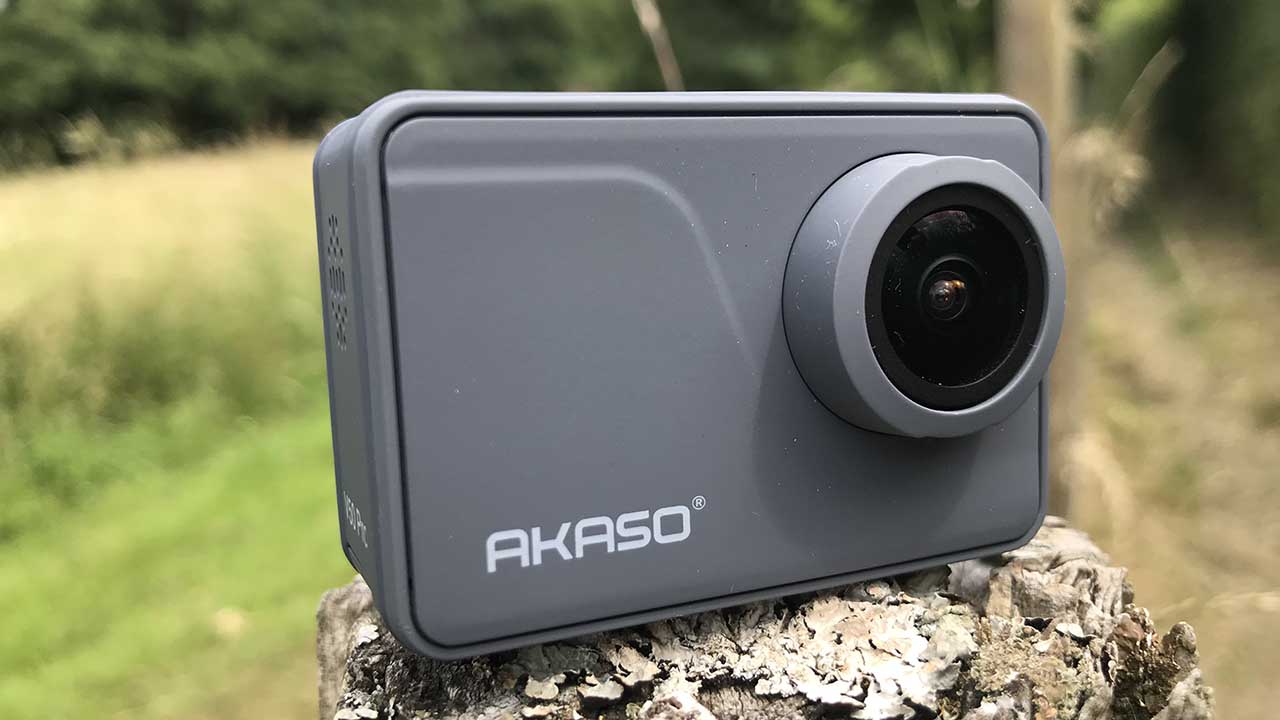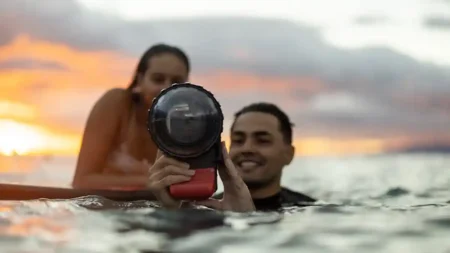Snap Verdict
It’s hard to stand out in a crowded market, but AKASO has managed it with a slick and robust design for the AKASO V50 Pro.
The camera itself is one of the best looking on the market with its rubberised grey exterior and waterproof housing that’s all fantastically designed.
Specs are impressive and shooting at the maximum 4K 30fps the footage is pretty good, but drop the resolution to 1080p, and things start to get a little wobbly.
The footage becomes painter like, lacking the detail that you’d expect, and in low light conditions that lack of tonal definition becomes overly apparent.
If you’re just interested in shooting 4K video, then this isn’t a bad camera, well thought out and easy to use. If you’re shooting anything other than 4K you’ll be disappointed with the quality of the video.
Info
Action Camera / www.akaso.org / £119 / $119 at time of review
Intro
If you want an action camera, then there’s plenty to choose from, and if you go by the spec’s alone you’d think that there was little point in spending a fortune on some of the premium brands.
The AKASO certainly looks the business, and when you check out the spec’s sheet; high-end resolutions with decent framerates, touch screen and a design that instantly sets it apart from other cheap action cameras, everything about this camera reads and looks ideal.
From the outset the V50 Pro is a camera you want to like, the slight rubberised design is tactile and looks amazing. The waterproof housing is well designed and functional everything just seems right.
As a package the AKASO V50 Pro is the business but how will it perform out in the field?
Features
Every action camera needs to have 4K at 30fps, and here the AKASO V50 Pro certainly provides with 4K at 30fps, 1080p at 60fps and 30fps and 720p at 120fps and 60fps.
It also has built-in electronic image stabilisation, an adjustable field of view, large 2-inch touch screen and can shoot stills at up to 20mp.
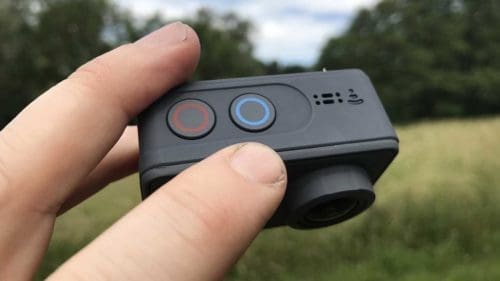
To protect the camera underwater, there’s an external 98ft waterproof housing.
Power is supplied through a 1100mAh battery, and as ever there’s built-in Wi-Fi so you can connect to the partner app for iOS or Android.
In the box alongside the camera are a selection of mounts to get you started, it’s a good comprehensive spec’s list and package.
Build and Handling
On first removing the camera from the box the design of the waterproof housing shows great thought in the aesthetics and usability of this camera.
The housing is slightly misted, giving it a quality look and feel. On the front, the lens is perfectly flat so easy to clean when needed. The case is also held closed by a single lever release which locks tight yet is still easy enough to open without too much faff.
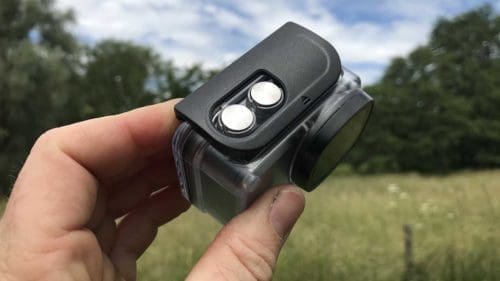
On the base of the housing is the familiar GoPro style mount meaning that you can use the AKASO V50 Pro with almost any GoPro accessory.
Releasing the housing it’s possible to see that the camera itself is held securely inside with no room for wobble or rattle within. Two rubber/foam strips on the backdoor apply pressure to keep things inside nice and tight.
With the camera removed the quality of the hardware shines. The grey rubberised finish of the camera body is one of the nicest that I’ve seen and gave me confidence about the overall quality of the camera. There’s nothing that feels cheap or budget about it.
The camera itself is very simplistic, on the side are the micro HDMI, Mini USB and MicroSD card slot, on top are two buttons, power/mode and shutter and on the base the access flap to the battery.
Pushing the red button powers on the camera and the blue one starts and stops recording.
All settings and options can be quickly accessed by tapping the touch screen or using the app.
It’s all seemingly straight forward. Direct use of the camera is as easy as it gets, and the simple design makes it easy to use out on the trail. It’s a shame you can’t use the touch screen with the waterproof housing in place, but this is a common issue with this level of camera.
Using the touch screen and everything makes sense, it’s not the most ergonomic of designs but does the job and doesn’t take too long to work out and familiarise yourself with the location of the settings you want.
The touch screen is good but not quite as responsive as those recently seen on the SJCAM cameras but not too far behind.
Once options and settings have been made and the camera popped back inside the housing, it’s time to put the camera through its paces.
Performance
Out on the trial and the ease of use of the camera was excellent, it’s always nice to use a camera that works and enables you to make settings changes without fuss easily.
Switching between resolutions and framerates and using the app was all simple enough, so there was no need to get the camera out of the housing.
The connection was quick, and the app seemed solid in use.

The design of the housing once again shined through with the flat lens being easy to clean. A quick wipe and all was clear of crud, then I was ready to set off and record some more.
Overall testing out on the trail and the performance of the camera was as good as they get for this style of in housing design. The only thing that would have made the user experience better would have been access to the touch screen through the housing.
After the ride and back home, it was time to review the footage, and this is where I’ve have found recently, things start to fall apart with other cameras.
Sure enough, the footage shot at 4K looked good, slightly over-sharpened but decent enough for this level of camera. Exposure and dynamic range were all good as well with the footage having a pleasing overall colour and saturation.
Checking through the 4K footage and sure enough, it all looked good, and I was especially impressed with the stabilisation. It’s by no means equal to GoPro’s HyperSmooth but makes enough of a difference to be useful and left on all the time.
While good the stabilisation does have a slight warping effect around the edges, it’s nothing too bad and although noticeable doesn’t detract from the footage itself.
Drop the resolution to 1080p, and like I’ve seen with other cameras recently the footage starts to fall apart. Sometimes it looks OK, but generally, it takes on a painter like look with a lack of definition and tonal range.
It’s an odd thing; it looks like an effect has been applied. Switching to 30fps or 60fps and the visual impact of the video is much the same with no real improvement between the two framerates at 1080p.
Downgrade the resolution to 720p at 120fps, and the footage becomes unusable.
For all the quality of the hardware, the area where quality matters is in the footage and here it is let down.
4K video is good, 1080p video is acceptable, 720p video is unusable.
AKASO V50 Pro Review Verdict
From the outset, the AKASO V50 Pro was a camera that I instantly liked. There’s plenty to like about the design, and real care has been taken over many of the design aspects and choices of materials.
The waterproof housing is one of the best in this price bracket, and the design and quality of the camera, with that grey rubberised exterior, looks and feels great. It does feel like a quality piece of kit.
Starting the camera up and connecting to the app was all smooth and well throughout, easy to understand and responsive. There may not be as many options as premium cameras but what there is, is not bad at all.
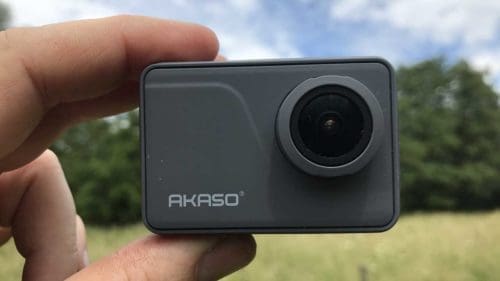
Then you review the footage, and it’s a tale of two. At 4K 30fps the footage is decent enough, proper levels of detail and although only 30fps the smoothness of motion in the frame was excellent.
Switching on the image stabilisation has a decent effect, and while there is a little warping at the edges, the stabilising impact is worth it.
Drop the resolution to 1080p, and the story is very different. The footage reduces dramatically in quality, and much of the quality tone and detail is lost. The footage is still usable but doesn’t have the depth of quality that the 4K video has.
In truth, you’d be better off filming everything at 4K and downsampling the 30fps footage to 1080p if you want the lower resolution.
At 120fps you do get the great slow-motion footage, but the quality at this setting lacks any detail. It looks as though an effect has been applied and it’s all gone a bit wrong.
The AKASO V50 Pro is a decent enough camera when used to film at 4K. The video, build quality and usability are excellent. At 1080p the footage is usable but at the lower end of what I’d expect from a camera at this or for that matter any price.
It’s a shame that the AKASO V50 Pro can’t quite live up to the quality of the hardware and specifications. It looks the part and feels the part with a better design than anything else at this price.
The 4K is good, but the 1080p footage lets it down.
